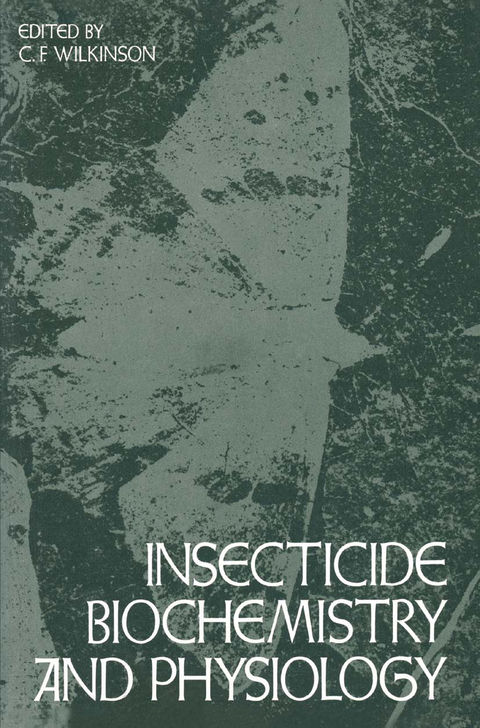
Insecticide Biochemistry and Physiology
Kluwer Academic/Plenum Publishers (Verlag)
978-0-306-30872-7 (ISBN)
Penetration and Distribution.- Penetration and Distribution of Insecticides.- Metabolism.- Microsomal Oxidation and Insecticide Metabolism.- Cytochrome P450 Interactions.- Extramicrosomal Metabolism of Insecticides.- Enzymatic Conjugation and Insecticide Metabolism.- Target Site Interactions.- The Nervous System: Comparative Physiology and Pharmacology.- Acetylcholinesterase and Its Inhibition.- The Acetylcholine Receptor and Its Interactions with Insecticides.- Effects of Insecticides on Nervous Conduction and Synaptic Transmission.- Insecticides as Inhibitors of Respiration.- Physicochemical Aspects of Insecticidal Action.- Selectivity and Resistance.- The Biochemical and Physiological Basis of Selective Toxicity.- Biochemistry and Physiology of Resistance.- Insecticide Toxicology.- Teratogenic, Mutagenic, and Carcinogenic Effects of Insecticides.- Insecticide Interactions.- The Treatment of Insecticide Poisoning.- Environmental Toxicology.
| Erscheint lt. Verlag | 1.8.1976 |
|---|---|
| Zusatzinfo | XXII, 768 p. |
| Verlagsort | New York |
| Sprache | englisch |
| Maße | 155 x 235 mm |
| Themenwelt | Medizin / Pharmazie ► Pharmazie |
| Naturwissenschaften ► Biologie ► Biochemie | |
| Naturwissenschaften ► Biologie ► Zoologie | |
| Naturwissenschaften ► Chemie ► Technische Chemie | |
| Technik | |
| ISBN-10 | 0-306-30872-X / 030630872X |
| ISBN-13 | 978-0-306-30872-7 / 9780306308727 |
| Zustand | Neuware |
| Haben Sie eine Frage zum Produkt? |
aus dem Bereich


